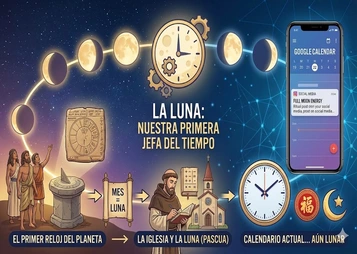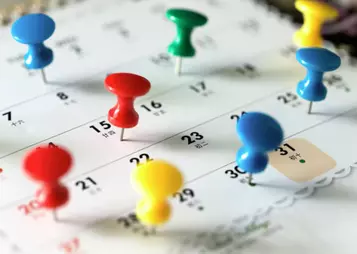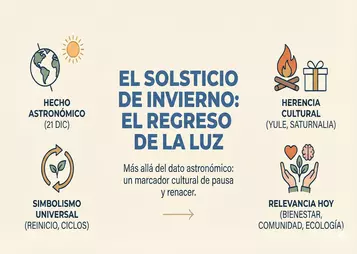El calendario resulta una herramienta esencial en nuestro día a día. Nos permite organizar el tiempo, decretar fechas importantes y planificar eventos. Sin embargo, más allá de su utilidad práctica, los calendarios esconden una serie de curiosidades y secretos que hacen de ellos objetos dignos de estudio y asombro. En este artículo, vamos a comentar algunas de las curiosidades más fascinantes de los calendarios, destacando desde sus orígenes históricos hasta su relación con eventos astronómicos y culturas antiguas.
El origen del calendario: una mirada al pasado
El origen de los primeros calendarios históricos habría que buscarlos hace miles de años, cuando surgieron en las antiguas civilizaciones que buscaban dar orden al tiempo. El más antiguo registrado es el calendario lunar, utilizado por los sumerios en el tercer milenio antes de Cristo. Este calendario se basaba en las fases de la luna y tenía doce ciclos de aproximadamente 29 o 30 días. Sin embargo, este tiempo no coincidía con el año solar, siendo este más largo. Para solucionarlo, hacían algo parecido a los actuales años bisiestos: añadir un mes cada cuatro años para recuperar ese desfase. Años después, serían ya los babilonios quienes fraccionarían el día en 24 horas y la hora en 60 minutos.
Los primeros calendarios romanos: un paso adelante
El calendario romano primitivo aba basado en un sistema lunar de diez meses, comenzando en marzo y terminando en diciembre. Cada uno de los meses tenía una duración de 30 o 31 días, alternando entre ellos. Sin embargo, este sistema lunar seguía sin estar en sincronía con el año solar, lo que llevaba a desfases estacionales. En el siglo VIII a.C., el rey Numa Pompilio, el segundo rey de Roma, introdujo una serie de reformas al calendario romano primitivo. Estas consistirían en agregar dos nuevos meses, enero y febrero, al principio del año, extendiendo así su duración a los 12 meses. Además, Numa Pompilio estableció que el año tendría 355 días, divididos en doce meses de 29 o 30 días, con febrero siendo el mes más corto. A pesar de todas sus modificaciones, aún precisaba de que se realizasen obligatoriamente ajustes de forma periódica para mantener una sincronización más correcta
El calendario juliano: el ajuste de los años
El calendario juliano, introducido por Julio César en el año 45 a.C., bajo las recomendaciones del matemático alejandrino Sosígenes, fue una de las primeras tentativas de crear un calendario más preciso. Este sistema tenía un año de 365.25 días. Como forma de compensación del desfase acumulado en el calendario romano, se optó por la inclusión de 90 días adicionales en el año 46 a.C., lo que provocaría un año con 445 días, que le valdría el sobrenombre de “Año de la Confusión”. Sería a partir de este momento cuando se decidió tomar la medida de agregar un día extra cada cuatro años, conocido como el año bisiesto. Este calendario sería implementado en el Imperio Romano y una amplia parte del territorio europeo durante varios siglos. Sin embargo, este ajuste no era completamente exacto, lo que llevó a desfases con el tiempo astronómico real y obligaron a hacer una nueva reforma.
El calendario gregoriano: la reforma necesaria
En el año 1582, el Papa Gregorio XIII introdujo el calendario gregoriano para corregir las discrepancias del calendario juliano. Este nuevo sistema hizo varios cambios importantes, incluyendo la supresión de diez días para recuperar el retraso acumulado y una nueva regla para el cálculo de los años bisiestos. Ahora, se agrega un día extra cada cuatro años, excepto en los años que son múltiplos de 100 pero no de 400 (por ejemplo, 1900 no fue bisiesto, pero 2000 sí lo fue). Es el calendario utilizado en la actualidad en la amplia mayoría de los países del mundo.
El calendario lunar y sus misterios
A diferencia del calendario solar, el calendario lunar se basa en las fases de la luna y tiene un ciclo aproximado de 29.5 días. Esto ha llevado a la creación de calendarios lunares utilizados por diferentes culturas, como el calendario islámico o el calendario hebreo. Sin embargo, debido a las diferencias entre los ciclos lunar y solar, estos calendarios requieren de constantes ajustes regulares para mantenerse sincronizados con las estaciones del año.
Calendarios lunisolares: lo mejor de ambos mundos
Para combinar las ventajas de los calendarios solar y lunar, se han desarrollado los calendarios lunisolares. Estos sistemas intentan mantener la sincronización con las estaciones del año y las fases de la luna. Un ejemplo notable es el calendario chino, que se basa en los ciclos solares y lunares para determinar las fechas de celebraciones como el Año Nuevo chino.
Calendarios no occidentales: diferentes formas de medir el tiempo
Mientras que el calendario gregoriano es el más utilizado en gran parte del mundo occidental, existen numerosos calendarios no occidentales que se basan en diferentes sistemas y tradiciones culturales. Un ejemplo de ello sería el calendario hindú, que utiliza un sistema complejo de ciclos planetarios y zodiacales, mientras que el calendario budista se basa en los eventos de la vida de Buda. Por otro lado, algunos pueblos de África se rigen por un calendario que fija los días festivos en función de la celebración de actos religiosos o mágicos. Son también definidos como “calendarios parlantes”, puesto que no existen registros escritos y se trasmiten de generación en generación de forma oral. Los encargados de su establecimiento son los sacerdotes de los templos más destacados.
La curiosa duración del año: los segundos intercalares
Aunque el calendario gregoriano ha logrado una mayor precisión en la medición del tiempo, aún sigue presentando desfases con el año solar real. Para mantener la sincronización, se han introducido los segundos intercalares, que son ajustes periódicos en los relojes atómicos para compensar la desviación entre el tiempo atómico y el tiempo solar medio. Esto garantiza que nuestros calendarios y relojes se mantengan alineados con los movimientos celestiales.
Como se ha podido observar, los calendarios representan mucho más que simples herramientas para señalar fechas y días. A través de su lectura y comprensión, podemos descubrir los misterios de cómo las culturas antiguas concebían el tiempo y cómo los sistemas modernos han evolucionado para ajustarse a los ritmos astronómicos. Ya sea que estemos usando el calendario gregoriano, el calendario lunar o cualquier otro, resulta fascinante contemplar la complejidad y la belleza de estos sistemas que dan forma a nuestra percepción y organización del tiempo.





